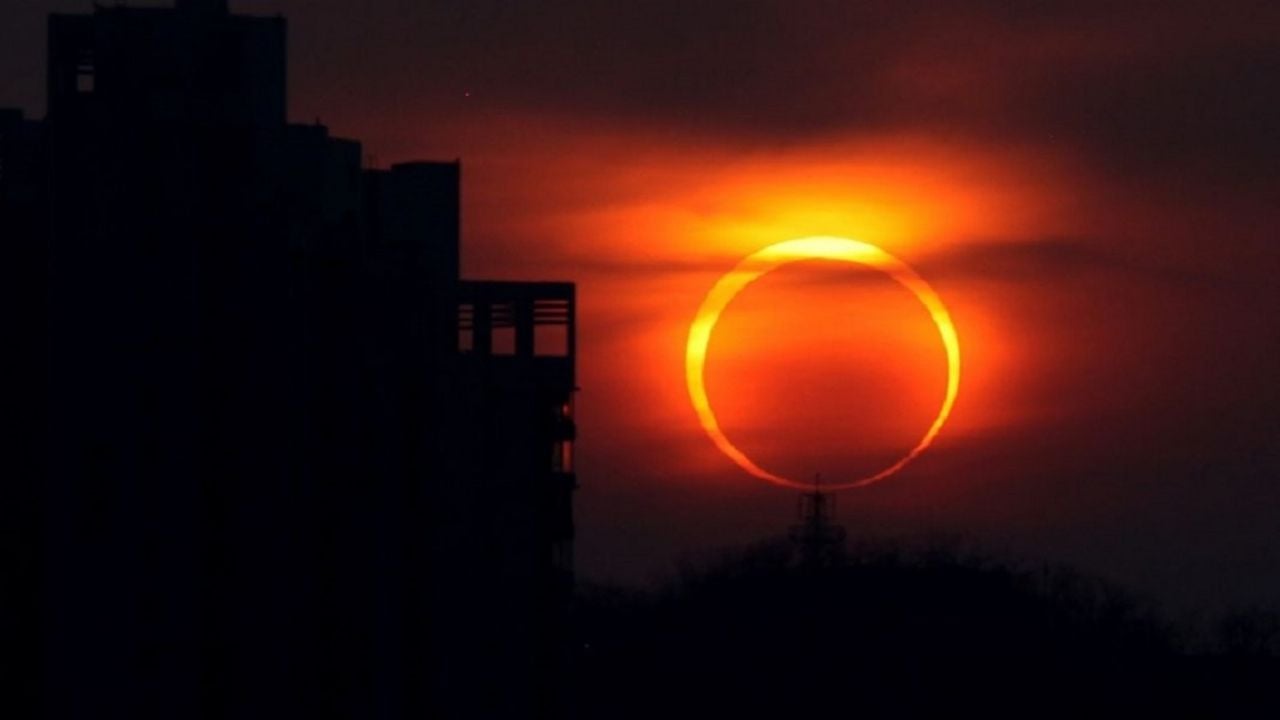This October 2, the sky will offer an impressive astronomical spectacle: a annular solar eclipse. This phenomenon, popularly known as the “ring of fire,” occurs when the Moon comes between the Earth and the Sun, but due to its position in the orbit, it does not completely cover the solar disk.
Instead of a total eclipse, a bright ring forms around the dark silhouette of the Moon. A annular solar eclipse It occurs when the Moon is at the farthest point in its orbit around the Earth, known as apogee.
Because of this distance, the Moon appears smaller from our perspective and fails to completely cover the Sun. As a result, the outer edge of the Sun remains visible, creating a ring of light or “ring of fire.”
This eclipse will be visible in several parts of the world, but the best views will be in certain regions of South America, including parts of Argentina, Chile and Brazil. In Argentina, the province of Santa Cruz will be some of the best places to observe this phenomenon in its entirety.

In other regions, a partial eclipse can be seen, where only part of the Sun will be covered by the Moon. Observing a solar eclipse requires certain precautions to protect your eyesight. You should never look directly at the Sun without adequate protection, as it can cause permanent damage to your eyes.
For this event, the use of special eclipse glasses that meet international safety standards is recommended. Solar filters can also be used for telescopes and cameras.

Impact
The solar eclipses They have fascinated humanity since time immemorial. In many ancient cultures, these events were seen as divine signs or omens. Today, although we understand the science behind eclipses, they remain events that capture the imagination and interest of people around the world.
From a scientific point of view, solar eclipses offer a unique opportunity to study the solar corona, the outermost layer of the Sun. During a annular solar eclipsethe Sun’s bright light is blocked, allowing scientists to observe the corona more clearly. This can provide valuable information about solar activity and its effects on space weather.
follow us on Google News and on our channel instagramto continue enjoying the latest news and our best content.


















